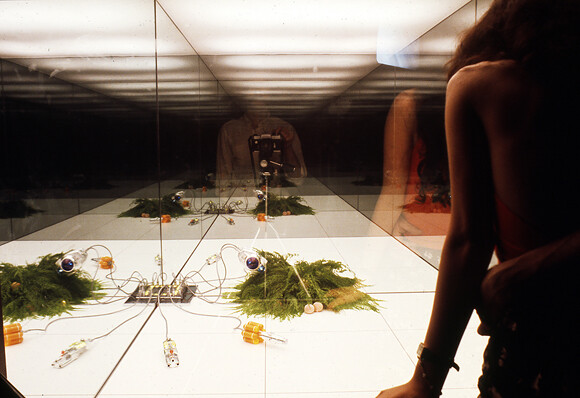September 18–December 14, 2013
Graham Foundation
for Advanced Studies in the Fine Arts
Madlener House
4 West Burton Place
Chicago, IL 60610
Curated by Peter Lang, Luca Molinari & Mark Wasiuta
This exhibition highlights the lasting significance of MoMA’s groundbreaking 1972 exhibition, Italy: The New Domestic Landscape. Presented for the first time in the United States outside of New York, the Graham Foundation iteration of Environments and Counter Environments, curated by Peter Lang, Luca Molinari and Mark Wasiuta, emphasizes both the dynamic context of radical Italian design and architecture in the 1970s, as well as the innovative exhibition that first presented this work in America.
Curated by Emilio Ambasz in 1972, Italy: The New Domestic Landscape showcased the forefront of Italian design and commissioned a series of experimental domestic “environments” and attendant films by the most vibrant Italian architects and designers of the period: 9999, Archizoom, Gae Aulenti, Mario Bellini, Joe Colombo, Gruppo Strum, Ugo La Pietra, Gaetano Pesce, Alberto Rosselli, Ettore Sottsass Jr., Superstudio, and Zanuso/Sapper. Utilizing a unique organizational method, works in the exhibition were separated into two distinct categories: Objects, which were subdivided into three groups—reformist, conformist, and contestatory—and Environments, which were divided into design as postulation, design as commentary, and counterdesign and postulation.
Contrary to convention, the Objects were displayed in the natural setting of MoMA’s sculpture garden, while the Environments were shown within the institutional spaces of the museum’s galleries. This curatorial decision provoked consideration of the architectural properties of the Environments and that of their museum setting, as well as the contemporary mutability of the term “environment” as it had gained currency across a range of fields, including the environmental design movement, the social and behavioral sciences, biology, cybernetics, the defense industries, and ecology.
To accompany the installations, each designer was asked to produce a film that would demonstrate their environment’s alterability. Together the environments and films refined the potential for domestic spaces to fundamentally influence inhabitants’ thoughts and actions.
Presented for the first time since 1972, Environments and Counter Environments brings together these important, previously lost films and returns to the original exhibition, not as a reconstruction, but as an analytical project that attempts to reassess the visionary possibilities of architecture and design. Also on display will be a selection of materials on the prototype Environments, as well as many of the original documents, working drawings, renderings, and primary source images, photographs, and models that went into the making of the MoMA exhibit.
Environments and Counter Environments, curated by Peter Lang, Luca Molinari and Mark Wasiuta, was originally produced by GSAPP Exhibitions at Columbia University’s Graduate School of Architecture, Planning and Preservation in the Arthur Ross Architecture Gallery before travelling to the Swiss Architecture Museum (SAM), Basel; the Disseny Hub Barcelona (DHUB), Barcelona; and the Arkitekturmuseet, Stockholm.
Support for this presentation has been provided by the Graham Foundation for Advanced Studies in the Fine Arts in collaboration with GSAPP Exhibitions at Columbia University’s Graduate School of Architecture, Planning and Preservation, with additional support from the Italian Cultural Institute of Chicago.
About the Graham Foundation
Founded in 1956, the Graham Foundation for Advanced Studies in the Fine Arts makes project-based grants to individuals and organizations and produces public programs to foster the development and exchange of diverse and challenging ideas about architecture and its role in the arts, culture, and society.
The Graham Foundation was created by a bequest by Ernest R. Graham (1866–1936), a prominent Chicago architect who was a protégé of Daniel Burnham.
